Inverted Baseball Or Softball Professional Batting Tee: Best Hitting Trainer Drills To Hit Line Drives Instead Of Ground Balls | Review & Coupon Code
Discover this inverted baseball, fastpitch, or slow pitch softball professional batting tee. Learn about the best hitting tee trainer drills to hit more line drives instead of ground balls. Check out this batting tee review and grab a 10% OFF coupon code…
Baseball Batting Mechanics Risk Hiding In Your Batting Tee
This is Part-1 of a 3-part baseball batting mechanics video series coming straight out of the Pitch-Plane Dominator online video mini-course…
Sick of struggling to reduce your hitters ground balls, swing and miss strikeouts, and non-productive weak fly balls? This simple 4-Step online video mini-course (7-modules total) will help hitters weighing less than 100-pounds, barrel the ball more consistently. Dramatically decrease ground balls, strikeouts, and weak fly balls (no matter the pitch location or speed) by applying human movement rules validated by science.
If you haven’t already, then CLICK the Link below to…
- Part 1 – [You Are Here] Baseball Batting Mechanics Risk Hiding In Your Batting Tee
- Part 2 – Dominate The Pitch Plane Like Joey Votto (Baseball Swing Slow Motion Analysis
- Part 3 – Baseball Hitting Tips For Youth: Discover The One-Swing-Fits-All Secret
In the baseball batting mechanics video, Backspin Batting Tee inventors, Taylor & Jarrett Gardner are going to dive into…
- Anatomy of ‘on path bottom half’
- Why are pitchers taught to keep the ball down in the zone? And,
- How to train hitting the bottom half…
CLICK HERE for an interview post I did with Taylor Gardner in 2015.
Anatomy of ‘On Path Bottom Half’
Should the barrel be level to the ground during the swing? Should it be down to the ball? Should it be up to the ball?
Baseball pitchers stand on a mound (if regulation) set up to 10-inches. If we have a 6-foot pitcher with an overhand release, let’s say his arm adds another foot-in-a-half, then we have about a 8.5 foot above flat ground release point. In addition to the target being a squatting catcher between 45-60 feet away.
The imaginary line connecting the pitcher’s release point to the catcher’s glove is what I like to call the Pitch-Plane, or plane of the pitch.
In fastpitch softball, the Pitch-Plane isn’t quite so drastic, but because of Gravitational Forces, the ball has to travel in an arc nevertheless.
Our objective as coaches is to get baseball batting mechanics to match the plane of the incoming pitch with the barrel.
You can also see from the eFastball.com graphic that line drives and productive balls in the air are hit using the bottom half of the ball.
Why are Pitcher’s Taught to Keep the Ball Down in the Zone?
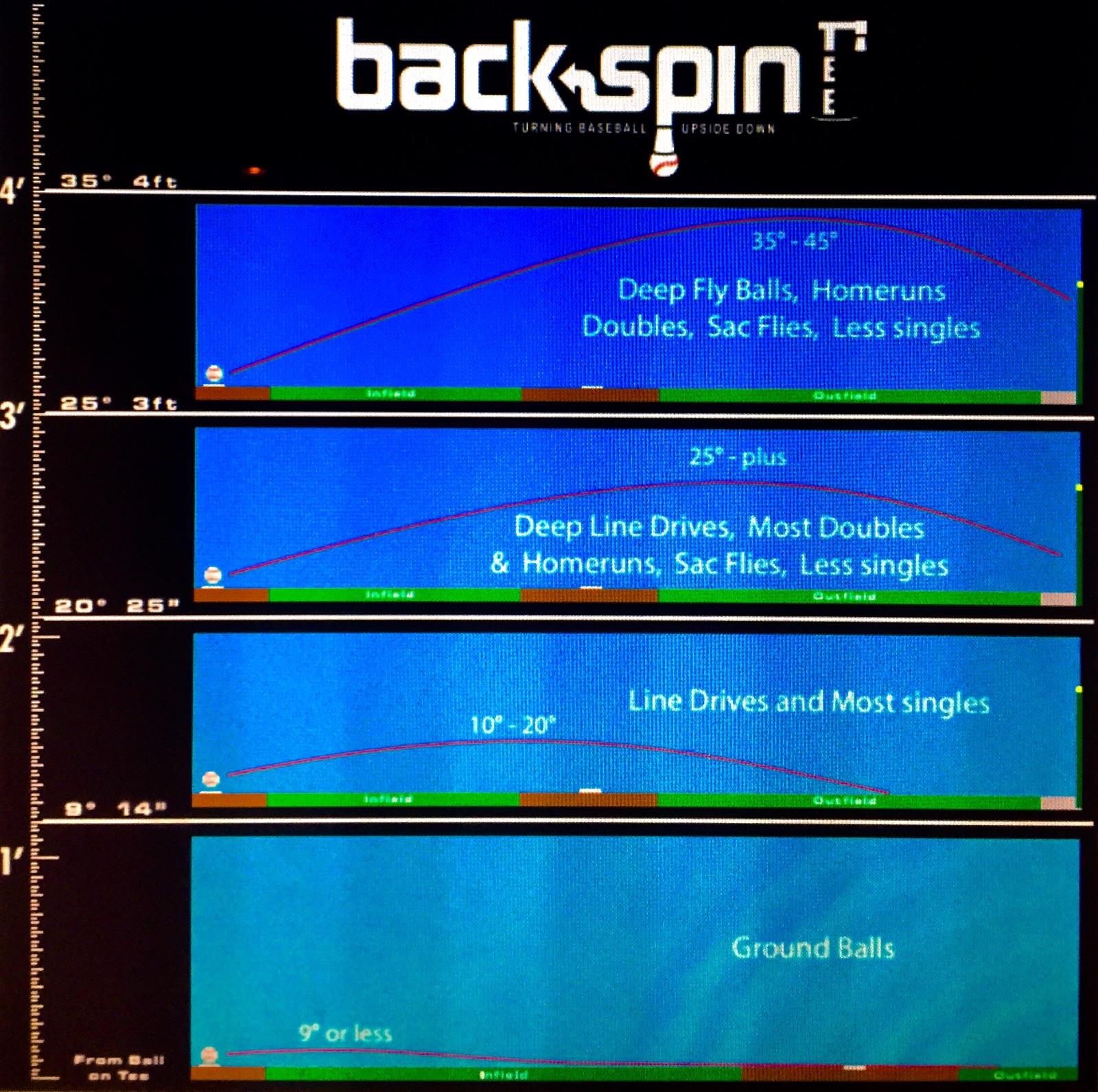
This baseball batting mechanics chart illustrates the importance of backspin on a batted ball. The higher the degree, the more backspin being created. Photo courtesy: BackSpinTee.com
Pitchers keep the ball down in the zone to get hitters striking the top half of the ball. And to create an element of deception.
Pitchers know that ground balls are outs 95% of the time in High School. In college and professional baseball, ground balls are outs 98-99% of the time.
The reality is, a 90-mph fastball drops 4 feet before it gets to the catcher. This equates to about a 5-degree downward trajectory. To the hitter, the ball may seem “flat”, but Gravitational Forces are instantly at work pulling the ball down after the pitcher releases it.
That’s only a fastball. In baseball, we can see up to a 20-degree downward pitch plane when the pitcher throws a breaking ball!
The other thing that’s happening immediately after the pitcher’s release, is the ball starts to slow down because of a myriad of factors, a couple being Gravitational Forces, and the humidity (or lack thereof) in the air.
In other words, the ball may be leaving the pitcher’s hand at 90-mph, but by the time it reaches the catcher’s glove, it’s lost maybe 4 to 6-mph.
How to Train Hitting the Bottom Half
Taylor Gardner told me a story about when his hitting mentor Matt Nokes was telling him of when Hank Aaron, shortly after retiring, was ‘touring’ MLB ballparks taking batting practice and playing home run derby.
Hank Aaron wound up crossing paths with Matt Nokes, where a young Nokes asked him what he was trying to do when he hit. Hank Aaron shared that he was always attempting to hit the bottom half of the baseball.
Traditional batting tees can promote baseball batting mechanics that hit the top half, especially with younger hitters, because they generally fear hitting the tee and knocking it over.
This can have a cascade effect, mechanically speaking, causing a hitter to swing down on the ball.
The BackSpin Tee turns the traditional tee upside down…literally. Try and swing up or down on a BackSpin Tee and you’ll hit the rubber tee cone, miss the ball completely, and/or get a weak result. Instant feedback. Ineffective outcomes.
The BackSpin Tee promotes ‘On Path Bottom Half’.
- Fix Your Child’s Fear of the Ball Fast: Proven Hitting Drills to Stop Flinching at Pitches—Trusted by Top Youth Baseball Coaches - July 12, 2025
- Fix Your Little Leaguer’s Hitting Slump Fast – Proven Confidence Drills & Mental Reset Tools (Used by Top Youth Baseball Coaches) - July 9, 2025
- Best Hitting Drills for 8-Year-Olds (2025): Fix Swing Flaws Fast with This MLB-Trusted Youth Baseball System—At-Home, Step-by-Step, and Built for Game-Day Confidence - July 5, 2025

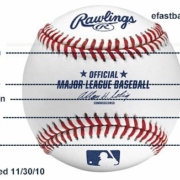
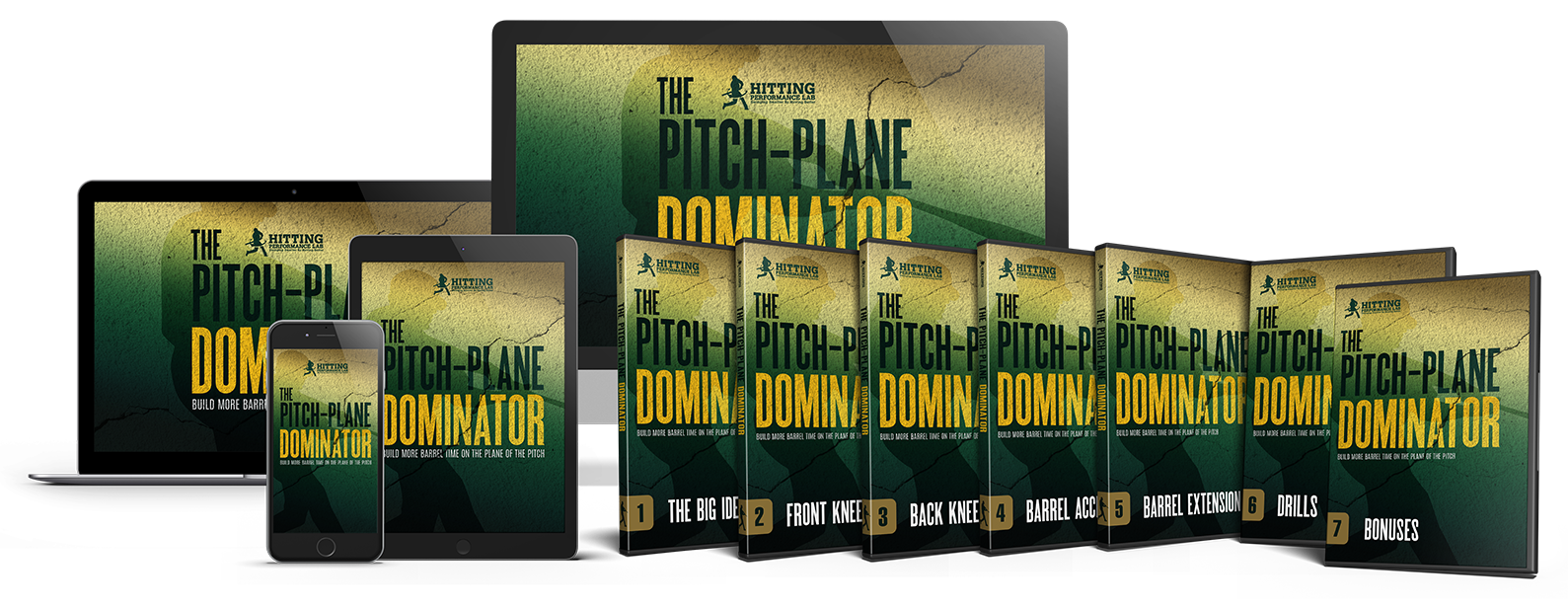


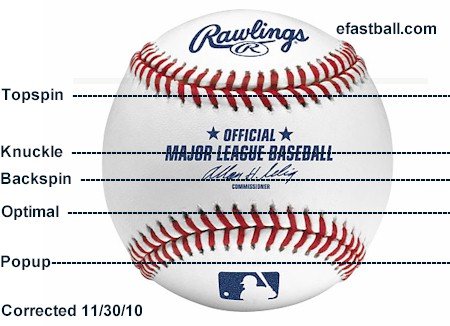
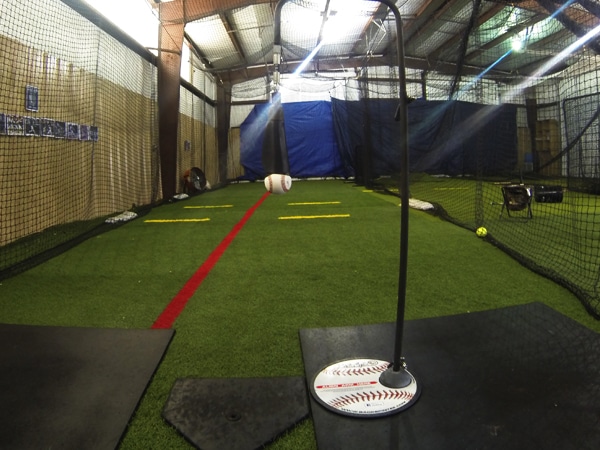

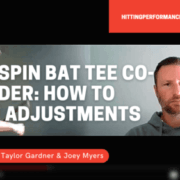
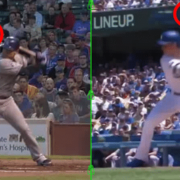
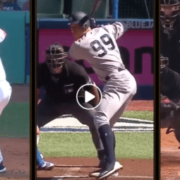
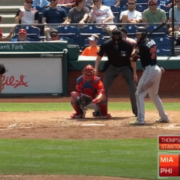

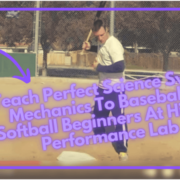
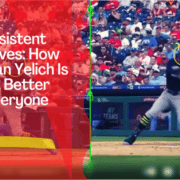



FIXROLLOVER CODE says is not valid..how do I get the discount
Hey Vito! A couple things, did you copy and paste the following coupon code exactly as this: 75OFFBACKSPINTEE And also, the discount won’t show until just before clicking the order button to charge your card. Please watch the last video in the post on how to apply the code. Please let me know if you have anymore troubles.
If you aim for the top of the ball you hit a ground ball,If you aim for the bottom of the ball you hit a fly ball.It isn’t the tee,it is the mechanics.
You’re right Larry! The mechanics play a key role in elevating. However, we’re driven by external cues. And a young hitter who’s mechanics aren’t optimal for hitting of this tee will show. So by creating a different external cue, the mechanics may fit to get the outcome of the hitting aid, in this case the Backspin Tee. I totally agree with you on the mechanics though, big lessening of the learning curve by making those more effective.
Good bit of info Joey. Thanks … I read somewhere that teams that players that elevate the ball generate as much as 12 times the runs that ground ball players score. Flies are more productive than ground balls because you eliminate the double play and you can still run on a tag up. Ground balls are what some youth coaches teach because the young one’s can’t field well enough to eat you up – but that changes!
I agree Bob, and great bit of info. We as coaches must teach for the next level (the big field), and not for the current one. It’s difficult to break out of the ‘winning’ mentality in Little League and 12U fastpitch. We MUST be vigilant with our focus on development at those levels, and not compiling trophies. Young ballplayers will get enough of the WINNING mentality in High School on up, and rightly so.
It amazes me that people tell kids to contact the ball downwardly to hit line drives…It amazes me that some batters haven’t picked up on the fact that the ball comes down to them… If you don’t notice that the balls are coming down than I wouldn’t worry about my mechanics… I would worry about the fact that these batters are not taking the time to understand or feel the game… You will not succeed if you don’t pay attention or make yourself aware of the simple things…this is not some breakthrough… It should be common sense… Swinging the bat and having the bat make contact and everything in between should be noted by the batter… Every batter should mess around and swing the bat in all directions and notice what the bat is doing and how it’s moving…it’s the batters only tool given to hit… Know how it works and know how the ball is coming in from all directions…just mess around with swings but pay attention to the details…The bat goes where you want it to go but it’s path depends on how you use it…The ball comes down (usually)…Im just amazed on how many people want to hit the top of a ball (bat actually moving down through contact) already moving downwardly…remember a mass changing directions while moving in an arc does some special things…. Great article Joey. Later….
~DM
Joey…. External cue! Yep… That’s exactly what happens.
If you don’t mind I’ll put it another way that makes sense to me but usually makes people look at me funny…
Tees are weird!
Now this tee you are displaying makes me want to try it out… This tee isn’t weird to me or at least it doesn’t have that look to me. You can approach the ball without changing anything because of how it’s being held…
Still, tees only provide the batter with a fraction of the swing… So batters must be mindful of what a tee provides them…To me a tee is for advanced hitters… The hitters who having given some thought to hitting… If you go up to a tee and hack away your missing the point…
~DM
Totally agree Djura! What coaches have to make sure their hitters are doing when working off a tee is to change the location of the pitch after EACH swing. Either up or down. Inside or outside. A tee is worthless otherwise. And with the Backspin Tee, changing pitch location is super simple.
There is a lot more to it ten telling a player to get on plane of pitch or coaches telling players to hit top part of baseball. The plane of the hands needs to be on top part of the ball because the barrel is slightly below the hands with body tilt. Also telling players to get on plane of pitch causes many of them to never get proper weight transfer to front side and leaves them hitting off their backside which creates weak swings or hands/arms swings and casting. Getting on plane too early against high level pitchers with late movement on pitches, doesn’t that create a bad swing thought? It should be said to get on the plane of where the pitch will be. The way things are said and told to players has to be watched and adjusted. Every player is different and the way they are taught needs to be adjusted to their way of thinking and reacting. Depending on their strengths and weaknesses. If a player uses correct body positioning to create ground force energy and hip shoulder separation they should produce a good powerful swing to drive the ball to the best of their ability. I have just found that if you are coaching or instructing you cannot fall into the trap of trying to convey a message the same way to every player. It doesn’t work that way. Take a group of players and ask them to all come up with a math problem with an answer of 14, everyone might give you a different problem with same answer. They are all correct, but how their mind thinks and the way their mind tells their body to arrive at the same answer in hitting can all be different. It may take 10-15 different ways to explain the same thing, like the saying keep your hands inside the ball. As opposed to hands being on the outside of the ball when you hit, that would hurt a whole bunch. Just food for thought. I love hearing new and creative ways to attack the same problems, sometimes things are said to players as a teach that is trying to get them to do the extreme opposite to actually get them to the correct position. I enjoy the website and the comments are fantastic, keep working and helping players out, it is a great game.
Dwight, I totally agree with you. Part of the problem is matching coaching cues with player learning styles. I’m doing a bunch of research into this now and have been coming up some interesting things. One thing for you to check out is Neuro Linguistic Programming. It’s what Tony Robbins bases most of his training on. It’s legit. That’s where great coaching will move. Just remember I said it here. 😉 And I always say don’t be quick with the hands, be quick to the pitch plane, but I like how you drill down even further to: “get on the plane of where the pitch will be.” Bam! You nailed it. Josh Donaldson says this quite a bit on Twitter tagging hitting gurus who preach massed practice on a low pitch approach. Yes, the majority of pitchers are taught to keep the ball down, but they also go up in the zone…outside…and inside. So our training should reflect this variance and seemingly randomness. Great thoughts brother, thanks for sharing!
The article and ball diagram above are very interesting, but to make contact at any of those parallel lines drawn on the ball a batter would have to swing level/parallel to the ground which is detrimental to taking the barrel down into a level plane with/into the downward flight of the incoming ball.
Great Base Ball-N
Don Ertvin
Don, I see what you’re saying, but you can achieve impact with those lines if the barrel was level with the plane of the pitch. By the way, I editing out your email address to keep the SPAM bots away from your inbox 😉
To hit a moving ball, the batter must quickly assess information that not only includes ball flight characteristics, but also the motion of the the pitcher.
Known fact: A ball hit off a tee has zero pitch speed and zero pitch spin.
Scientifically proven fact (What is omitted when telling you to lean to hit a ball with backspin).
When the bat makes contact with a ball, the ball obviously goes in the reverse direction toward the field. But contact also changes the ball’s spin. While there is ample research on this, here is just one.
Mont Hubbard and colleagues at the University of California, Davis modeled all the forces on a batted ball and found:
• A fastball arrives at the plate with backspin. Once hit, it leaves with topspin.
• A curveball arrives at the plate with topspin. Once hit, it leaves with backspin.
So how can a batter hit a ball with back spin off a batting tee? Simple physics. The ball isn’t rotating. Therefore when a batter hits a ball off a batting tee just below mid-line, the friction of the ball and bat colliding created at contact causes the ball to leave with back spin.
But of course in a game, batters hit a moving ball with different speeds, spins and trajectories. Using the Anatomy of ‘On Path Bottom Half’ displayed in the article, hitting a fastball at the “optimal” location will not produce back spin. It will possibly reduce the top spin or produce a knuckle ball at best. So the spin of the ball is actually dictated by the type of pitch thrown.
Whether you’re a high school, college or pro baseball player there is no way a batter can control hitting a baseball with back spin constantly or predictability. So don’t worry or waste your time trying to do it. Not to say back spin won’t possibly help with distance – just that back spin is pretty much out of a batter’s hands. A batters focus needs to be on getting on time with the pitcher, early pitch recognition, hitting the ball square, not cutting the ball or intentionally trying to hit to create backspin.
The issue with batting tees in general. Although there is ample scientific research, here are just four examples why:
Location Alone Doesn’t Determine the Type of Pitch Nor the Type of Swing Needed to intercept the pitch.
The motor system responds in real time to the environment, rather than following a previously simulated prediction. (1) In other words, when a batter swings a bat in response to a live pitch (real time to the environment), the movement doesn’t really follow the practice or training he/she did swinging at a stationary ball off a tee (the simulated prediction).
Research (2) shows goal directed movements (e.g. swinging a bat to hit a ball) are organized via perceptual information that is relevant to the movement situation. (Movement being the operative word. No ball movement off a tee)
Perceptual and motor skills involve spatial awareness which is being aware of the space occupied by your body and how to position and maneuver your body in it. Batters need to train to moving objects in order to develop their spatial skills. A recent study showed spatial recognition, such as the ability to shift attention between near and far targets, were associated with fewer strikeouts. (3)
(This includes Coincidence Anticipation which is the ability to produce a response that accurately coincides with the arrival of a moving stimulus. For example, being able to hit a moving ball accurately with a baseball bat.)
A recent study(4) found the location of impact for intercepting a moving ball is the result of the assessing variables such as type of pitch (e.g. speed of ball, trajectory , etc), therefore, the impact location for a particular flight of a pitch cannot be one specific point (e.g. training on a batting tee) in hitting a moving ball. Impact locations in hitting a moving ball do not actually reflect the mental representation of a batter’s movement learned or practiced off a batting tee.
(1) Fink, P. W., Foo, P. S., & Warren, W. H. (2009). Catching fly balls in virtual reality: A critical test of the outfielder problem. Journal of Vision, 9(13), 14
2) Katsumata, Hiromu (October 17th 2012). The Examination of Cortical Dynamics for Perceptual-Motor Processes in Visually-Guided Cognitive/Motor Task Performances, Advances in Clinical Neurophysiology, Ihsan M. Ajeena, IntechOpen, DOI: 10.5772/50263
(3) Burris, Kyle, et. al. (2018) “Vision, sensory and motor testing could predict best batters in baseball: High scorers on computer tests spent more time on base, had more walks, fewer strikeouts.” Duke University Medical Center, ScienceDaily. ScienceDaily, 8 January 2018.
(4) Katsumata, H., Himi, K., Ino, T., Ogawa, K., & Matsumoto, T. (2017). Coordination of hitting movement revealed in baseball tee-batting. Journal of Sports Sciences, 35(24), 2468–2480. doi:10.1080/02640414.2016.1275749
Well thought out response to the post. I appreciate you taking the time. A couple things…
1) Your point: “A fastball arrives at the plate with backspin. Once hit, it leaves with topspin. A curveball arrives at the plate with topspin. Once hit, it leaves with backspin.” This is from the pitcher’s perspective, reverse this for the hitter (i.e. a fastball – to the hitter – arrives with topspin).
2) You’re comparing apples to oranges hitting off a tee versus LIVE. Tee swings allow a hitter to work mechanics. Working timing and mechanics at the same time with a moving ball is a MAJOR challenge, especially when learning a new motor skill. What happens to your brain when you write your first and last name in half the letters for the first time? Thank you high cognitive load!
3) It’s hard to disagree with LIVE hitting studies shared…to train LIVE and get a practice swing to translate into games, all the principles found in the book “Make It Stick” by Peter C. Brown are the gold standard. One being to train in a varied atmosphere.
4) Backspin is only a small part of the equation, too much and you hit a popup, non at all (knuckleball), and the ball doesn’t go as far. The Goldilocks Golden Rule applies here. Backspin greases the “chute” if you will, same high/low air pressure principles wing flaps on a plane use to ascent/descend. Physics!! Backspin isn’t the whole pie, but it’s a piece.
5) The Backspin Tee uses the principle of training to look for a specific part of the ball to hit over and over and over, it has to do with training the Reticular Activation System. And,
6) Here’s the bottom line, it’s not about hitting it perfect, it’s the quality of your misses. The best hitters miss-hit the ball more than not. Roughly 40% FB rate, 20% LD rate, & 40% GB rate. Hitters can train to make their misses more quality. This is controlling how and where they hit the ball vertically and horizontally on the field.
I love studies and they definitely have their place on my shelf, but they don’t mean a darn thing if they’re coming from someone who doesn’t actually work with hitters in the trial and error teaching process. Nasim Taleb talks A LOT about this in his book Antifragile. Research DOES NOT make way for invention, invention makes way for research. Tinker and test, tinker and test. That’s the beauty of the Scientific Method’s trial and error process. To say batting tees don’t have a place to train hitters is laughable. How you train with them matters.
Thanks for the response. I do believe you have some valuable information on your website. So please don’t take my return response as an attempt to “discredit” you or your teachings. I truly believe you do offer help in baseball.
Sorry, but I did make this as short as possible but wanted to address most of your response points.
First, I’ve been a teacher for the past 15+ years, ran my own business for 20+years and an active baseball coach and trainer since 1992 (and played the game myself like many have). Training includes athletes from 8yr olds to college players. My degree is in psychology (cognition emphasis) and like you, have an alphabet soup of certifications. Neuroscience and brain health along with biomechanics. Plus I’m a certified sports psychology coach (Ed.) to name just three. I am in contact with many college coaches and professionals such as yourself.
I do own the book “Make it Stick” and have read and highlighted a few times. As an educator, it was one of the top books for us to read. According to the publishers, “Make It Stick synthesizes cognitive principles to help learners of all ages to improve their learning.” The misconception by most is “learning” means “learning everything”. The underlying theme of the book is geared for better academic learning not learning dynamic interceptive motor skills specifically-see below (although some of the information does apply to baseball). Note how many times the words “study”, “quizzes”, “classwork” or “text” is used throughout the book. Pg. 141 “On any list of differences that matter most for learning, the level of language fluency and reading ability will be at the top or near the top.” This sentence, along with several others, tell you they are talking about learning for academics. The editorial reviews on Amazon also support this.
Your response of: “I love studies and they definitely have their place on my shelf, but they don’t mean a darn thing if they’re coming from someone who doesn’t actually work with hitters in the trial and error teaching process”. Their book also references a substantial amount of scientific research studies to support their assertions. I must point out while two of the authors are cognitive psychologists, they are not hitting coaches. One is an educator and one a researcher. The third author, Peter C. Brown, is a writer and novelist. Also, not a hitting coach. None of them “…actually work with hitters in the trial and error teaching process”.
Author Henry L. Roediger III (cognitive psychologist) hypothesized that the more that the processes used in retrieval (actual doing) matched those used in encoding (initial learning), the better memory performance would be, and called this framework “transfer-appropriate processing”. Transfer-appropriate processing (TAP): Memory will be best when the processes engaged in during encoding (learning) match those engaged in during retrieval (actual real-life use) (1).
From Amazon’s bio: Author Mark A. McDaniel is a psychology researcher in the area of human learning and memory. He is one of the most influential researchers in prospective memory, also well known for other basic research in memory and learning, cognitive aging, as well as applying cognitive psychology to EDUCATION – (which is different from dynamic motor learning-(see next paragraph). Prospective memory is memory for performing intended actions in the future. His Multi-Process Framework contends incorporating contextual variability highlights the interplay of monitoring and spontaneous retrieval in prospective memory.
“Make it Stick” is good and is a piece of the puzzle. I too recommend it as reading but I wouldn’t call it “The Bible” when applying to motor skill learning. Specifically to dynamic interceptive motor skills which is what swinging a bat attempting to hit a moving ball is. Very specific to motor learning (and mainly uses sports both in the laboratory and real environment) is the book by Dr. Gabriele Wulf Attention and Motor Learning. Plus her paper Attentional focus and motor learning: a review of 15 years (2) published in the International Review of Sport and Exercise Psychology. I also recommend Principles of Motor Learning in Ecological Dynamics. A comment on Functions of Learning and the Acquisition of Motor Skills With Reference to Sport (9). There are others but this is a start.
Response to: Apples to Oranges. Live pitcher vs. Batting tee
The act of hitting a live pitched baseball (apples) is:
– A dynamic interceptive motor skill. By definition: involves the ability to synchronize one’s own movement to that of a moving target. To be successful, an individual must pick up and use perceptual information about the moving target. It requires the individual to link their own movement and the spatial and temporal constraints being imposed by the moving target. The ball is being thrown by a pitcher who is trying to manipulate the balls flight, so the batter must use perceptual feedback, mainly from their vision, to tell him/ her where they believe the ball is while it is in motion and then must time the swing correctly in relation to this assessment. Coordination of dynamic interceptive movements are predicated on the cyclical relations between an individual’s actions and information sources from the performance environment. (3).
– The batter has no idea before the pitch where it will be, at what speed, at what trajectory, whether they will swing or not swing, etc. (there are many studies that show muscle tension is different when not knowing vs. already knowing what action to take).
– Baseball is also an open skilled sport. By definition, open skilled sports are when “an athlete has to coordinate his/ her actions in accordance with the movements of an object to be acted upon or those of a partner or opponent. There is variability in timing and in the direction, length and height of the ball trajectory” (4). It’s learning movements to an unstable, ever-changing environment where the emphasis is on the individual’s capabilities to select the appropriate response in a given situation for success.
– Externally paced skill. The environment, which includes opponents, controls the rate of performing the skill. The performer must pay attention to external events in order to control his/her rate of movement. These skills involve reaction and are usually open skills. i.e. in ball games, the performer must time his actions with the actions of other players and the ball. (5)
-Variable skill. The skill is applied to a number of different environments/ conditions/ stimuli, allowing both the development of the skill and the ability to adapt the skill to a range of possible situations. This is vital for open and interactive skills (5).
– Choice Response Time Task (Hick’s Law). There are multiple stimuli (pitcher characteristics, ball characteristics, physical conditions, situation, etc.) and each stimulus requires different analysis and a combined single response. Response times are slower. In hitting, response times reflect the time it takes to interpret the different stimulus, get information from memory, initiate a muscle response and to act or not to act.
-There is a time constraint. The athlete must take action in a very restricted amount of time. Very limited time to decide what to do.
Batting tee (oranges):
– Not an interactive dynamic motor skill (the ball (target) never changes. It’s not moving, it’s stationary. No spatial and temporal constraints.
– The batter already knows exactly where the ball is (in front of him on the tee), at what speed (0 mph), At what trajectory (0 degrees because it isn’t moving), and already knows they are swinging. (as stated previously)
-Closed Skill. By definition a closed skill is one of a series of movement patterns performed in a predictable, non-changing environment so that movements can be planned in advance.
-Self-Paced Skill – Where the performer determines the time and pace of skill execution.
-Fixed task. A specific movement is practiced repeatedly and often referred to as a drill (5).
– Simple Response Time task (Hick’s Law). There is just one stimulus (e.g. ball sitting on a tee) and when it’s placed on the tee, you need to respond with one response (e.g. swing the bat). People respond faster when there is just one stimulus and one response type. (Ball sitting still – swing)
-There is no time constraint. Can take as much time as they want to plan and execute the act of swinging to one specific spot.
So nothing that resembles a real pitched ball. “The ecological constraints of practice have a significant effect on the acquisition of functional information–movement couplings and learners need to converge on information-specifying perceptual variables” (6).
Reference to Make it Stick. While there are many pages to support my assertion, here are just a few.
From Make It Stick:
“Many common study habits and practice routines turn out to be counterproductive. Underlining and highlighting, rereading, cramming, and single-minded repetition of new skills create the illusion of mastery, but gains fade quickly. More complex and durable learning come from self-testing, introducing certain difficulties in practice, waiting to re-study new material until a little forgetting has set in, and interleaving the practice of one skill or topic with another.”
Batting tee falls under the “single-minded repetition of a new skill” category if we apply it to the theme in Make It Stick. A batting tee is also non-variable “block practice”. And moving the tee to different positions is still non-variable, single-minded repetition. The athlete is still only single mindedly doing one thing just in a different position. Using a batting tee also continues to reinforce conscious awareness (internal thinking) of a skill (new or known) when an athlete needs it to be an unconscious action. “Interestingly, research shows that the learning of new MOTOR SKILLS suffers when we direct our attention to the coordination of movements” (4). Coaches are continuously encouraging conscious control over a process that they want to be automatic. The act of “choking” under pressure is widely understood to be a result of the brain trying to regain conscious control over the motor skills in an effort to improve performance. This is the opposite of “being in the zone”. Where an athlete just performs without any conscious effort. But that’s a whole other topic.
Just a few things from Make it Stick:
-“However, research has shown that the long-term effects of a more variable approach, where multiple things are practiced mixed together, are much more beneficial than single minded repetition and block practice.”
-“People commonly believe that if you expose yourself to something enough times – say a text book, passage or a set of terms form 8th grade biology class – you can burn it into memory. Not so.
-“The fallacy in thinking is that repetitive exposure builds memory.”
-…the findings that repetition by itself does not lead to good long-term memory.”
Batting tee isn’t interleaving: see video – http://gocognitive.net/interviews/benefits-interleaving-practice
From “Make it Stick” about the Cal Poly baseball team “Easier Isn’t Better” pgs 79-82 referring to hitting a pitched baseball really spotlights my assertion. It states:
“In this instant, the batter must execute a complex combination of perceptual, cognitive and motor skills: determining the type of pitch, anticipating how the ball will move and aiming and timing the swing to arrive at the same place and moment as the ball.”
Cal Poly experiment in Make it Stick: This was done during practice (real environment not laboratory).
Going against a live pitcher, one set of batters, group 1, saw 45 pitches – fastballs, curve balls and change-ups but they were evenly divided up. So they would see 15 curve balls in a row, then 15 fast balls then 15 change-ups.
The other group, group 2, were given a more difficult practice. The three types of pitches were randomly interspersed across the 45 pitches. For each pitch, the batter had no idea what to expect.
They did this twice a week for six weeks. At the end, the hitting was assessed. Both groups benefited from the “extra” practice BUT group 2 (random pitches) – in their words – “displayed remarkedly better hitting relative to those who practiced on one type of pitch thrown over and over.”
The batting tee is practicing one type of pitch thrown over and over. There are a multitude of laboratory and real environment experiments that support this same result. Coaches and athletes think they are bettering the swing mechanics but they’re not. Swing mechanics are not produced or executed in isolation to the environment. Proper mechanics are dependent on environmental and sensory variables.
Your response: “…training to look for a specific part of the ball to hit over and over and over,”.
-From Yale professor, Dr. Robert Adair and former physicist to the Nation League: “You might as well close your eyes. All the information you have to hit the ball is in your brain when the ball is at the halfway point to the plate.” From The Language of Sport by Tim Considine.
-Ken Fluid, visual psychophysicist: “In the last several feet before the plate, the ball reaches an angular velocity that exceeds the ability of the eye to track the ball. The BEST hitters (pro’s) can track the ball to within 5-6 feet of the plate.” From “Busting Baseball Myths.
– “To hit the ball the batter must predict when and where it will cross the plate” From Biomechanical Principles in Sports (2004).
-“Batting is a matter of generating bat speed and guessing where the ball will be.” From physicist Peter Brancazio, author of Sports Science.
– PLOS ONE Journal: Feb 2016 – Takatoshi Higuchi et. al. “Contributions of Visual Information about ball trajectory to baseball hitting accuracy. Tested college baseball players vs. pitching machine throwing random fastballs and change-ups. Group 1-They obscured their vision (using glasses that could be electronically altered) from ball release and the first 15 feet. After 15 feet, the batter’s vision was cleared to see the rest of the pitch. Group 1’s ball contact for both pitch types were terrible. Group 2 – Batters vision was clear from delivery up until the last 15 feet, then vision was obscured. Group 3 – Batters vision was never obscured. Group 2 & 3’s contact for both pitch types were almost identical. It didn’t matter that the batter couldn’t see the bat hit the ball. They still hit just as well and much better than group 1 who had the chance to see bat-ball contact if they could.
You can’t see the ball hit the bat and has been scientifically shown it doesn’t matter that you can’t see the ball hit the bat. But it is very important to see it early. So why waste time doing something you can’t do – “…training to look for a specific part of the ball to hit over and over and over.” ?
While I have no “true” research to support this, I have years of my own real-life training observations. I video all my players both in training and in live games then compare the two using slow motion. I use to use a batting tee and all the drills the top college and MLB hitting coaches and pro players used. But I stopped when I noticed that batters were using only one swing plane when hitting a ball off the tee and their timing and certain mechanics differed. There was no moving ball to “read” so batters used their “preferred” swing angle. This preferred swing angle is fine for some pitches but not for the majority of other balls thrown at different trajectories, speeds and locations. This was with middle school players to college players. I also analyzed pro’s who had available videos of them hitting off a batting tee and then compared those swings to live game swings (matching pitched ball locations very close same location). Mechanics were different and swing planes different. They had one swing plane when hitting a ball off a batting tee. Yes, swing planes varied in the majority of the “live pitches” because of the different trajectories for the type of pitch thrown. Swing angle differed because they were attempting to match the bat path with the ball trajectory even though it was in the same location at contact as the batting tee. That indicates the batting tee only trains one swing plane. Good hitters have good timing and are able to match the angle of different types of incoming pitches to make solid contact by staying on plane with that pitch as long as possible. Different tee mechanics? Here are just a few things observed hitting off a tee (and these were the pros):
“Squashing the bug”, bat wrap, closed hips, downward swing plane (chopping down), raising up (head moves up after front heal plant), leading with hands, kinetic chain breakdown and a few more. Yet they didn’t do these things during live game hitting.
Your response: “Working timing and mechanics with a moving ball is dang near impossible, especially when learning new motor skills.” I humbly disagree. I have worked with countless athletes with great success. And on the rare occasion I use a batting tee, it’s only once or twice for no more than approximately 8-10 swings. The rest of our sessions are with live pitching and a method that doesn’t direct conscious attention to mechanics.
“According to traditional views, people have to go through a learning stage in which they consciously control their movements. But it’s been proven that conscious control is detrimental. As it turns out, there does not appear to be much support for the view that a “skilled focus” (at least one that directs attention directed to the execution of the movement) is very effective – even in the early stages of learning”(4). There is a way to learn a new skill without directing conscious attention to the coordination of body movements and athletes all respond well and quicker vs a batting tee. I have found neither age, experience nor seemingly “difficult” training hampers learning – if done right. A batter’s mechanics are dependent on the type of pitch thrown and other variables (see definition of dynamic interceptive motor skills & open skilled sport above). Batting tee – one variable and conscious control.
“Ecological psychology, allies to biomechanical analyses of batting. The ecological constraints of batting against a live ball are very different from batting against a pitching machine*, differing especially in the informational constraints that can be used to gear actions, advance information prior to ball release, and vision of a ball’s trajectory that are essential for successful performance. A multitude of research suggests practice against real bowlers (pitchers) enables the pickup of constraining perceptual variables rather than non-constraining variables” (7).
*You can replace the word pitching machine with batting tee.
Even Ulric (Dick) Neisser (1928-2012) the “father of cognitive psychology” advocated for ecological approaches to cognitive research. Neisser brought together research concerning perception, pattern recognition, attention, problem solving, and remembering. He was inspired by looking out a window at twilight. He realized he could see the world outside the window or he could selectively focus attention on the reflection of the room in the window (8).
Lastly, Coaches preach and teach repetition, but in a game, what happens? In practice, a hitting coach will say,
• “Get your swings in.”
• “Get your time in the cage.”
• “Make sure you’re getting your swings off the tee.”
Most hitting coaches say they want between 50–100 swings a day per hitter. I’ve even heard up to 200. Let’s just look at the 50 swings per day. Even at the low number it shows coaches are training players to swing, swing, swing, swing, swing…times 10!
From espn – 2018 MLB stats.
Let’s say in a game a batter gets up 4 times (MLB ave.). The average number of pitches a batter sees (MLB) is 4. So they will see approximately 16 pitches at the plate. A batter swings at 46% (MLB) of pitches. Let’s make it easy and say 50%. So they swing at 8 pitches in the course of a game. How does taking 50-100 swings off a tee or soft toss for that matter every day “train” you for the following?
When a player gets in the game what do they hear from their coaches?
• “Get your pitch.”
• “Be patient. Be selective.”
• “Work the pitcher.”
• “Have discipline up there.”
Many coaches teach and preach repetition swing, swing, swing, swing…, but in a game, they expect the polar opposite – discipline, patience, as well as a good eye.
Hitting coaches have players spend most of their time hitting off a tee, doing soft toss and lobbing in 45-55mph fastballs for hitters to tee off on. Does really sound like hitting training or just conscious swing repetition? That’s not making them a good hitter. Just a swinger. Big difference.
You mentioned the RAS. For motor control, the connections of the reticular formation with motor neurons facilitates maintenance of balance, posture and tone when executing various body movements. It enables the cerebellum to integrate sensory inputs (internal & external) to process the data for motor coordination. It also learns to identify patterns in the sensory signals transmitted through it.
So, the batting tee teaches swing, swing, swing at an object with no environmental influence and very limited if any sensory inputs. Yet to hit a live pitch, the brain needs to have the ability to screen and look for important sensory information (pitcher variables, thrown ball variables, situation, etc.) which all dictate the type of swing response needed (mechanics) to successfully hit a moving ball. It doesn’t get the ability to learn that when hitting off a tee.
Again, we are talking motor learning. There is a Motor Control Hierarchy.
“High Level – Strategy….Middle level – Tactics…Low – Execution
The proper functioning of EACH level of the motor control hierarchy relies so heavily on sensory information that the motor system of the brain might be properly considered a SENSORIMOTOR SYSTEM.” (10)
Response: “It’s not about hitting it perfect, it’s the quality of your misses.”
We can agree on “It’s not about hitting perfect”. But I would change it to “swinging perfect”.
In response to the second part of that sentence “…it’s the quality of your misses.”
We can all agree the pitch a batter swings at has everything to do with how well they hit. A batter has to decide whether to swing or not to swing and take action long before the ball ever gets to the plate. So the type of swing is actually dictated by the type of pitch. Therefore, it’s not about the quality of your misses. It’s about the batter’s ability recognize quality pitches to swing at. It’s early pitch information that reduces their misses not non-variable, single minded block practice off a tee to have “quality misses”. You can have the best swing in the world but if you swing at bad pitches or have bad timing to name a few, that great swing means nothing.
I don’t know too many 7yr olds that can’t hit a ball off a batting tee. Might not be great, but they will make contact. But throw a ball to them to hit, they will miss many more when compared to the few misses hitting off a tee. When my son was 4, he could hit a ball off a tee. But when I threw to him, either easy over hand or even under hand, he missed 98% of the time.
Response to: “To say the batting tee doesn’t have a place to train hitters is laughable.”
The batting tee does have a very limited purpose. And I do mean limited. The problem is, the majority of athletes and coaches focus entirely too much and spend way too much time on the batting tee. They treat it as the “Holy Grail” for hitting. And you are right, “How you train them matters.” I found utilizing a different proven method that rarely uses a batting tee (which is different than the “status quo” and against “the way it’s always been done” and not “stuck training and playing by the same old rules and why we’re having this exchange) gets batters hitting better, quicker and with better retention. I don’t attack anyone who teaches hitting using a batting tee to say it’s “laughable” to use one (that’s a closed mind set). I just say there is a better use of your time and a way to get even better, longer lasting results.
The problem is, after years and hundreds of subsequent experiments the scientific evidence has confirmed and elaborated that even when someone’s beliefs have been refuted, partially refuted or challenged, the majority of people will still fail to make appropriate revisions in those beliefs. They just keep doing what they’ve always done. To say “the batting tee doesn’t have a place to train hitters is laughable” is case in point. It’s easy to see why that statement seems plausible because using a batting tee is “the way it’s always been done.”
I’m not trying to convince anyone of anything or convert anyone. I’m just giving other, often omitted, facts. For me, it’s up to the reader to decide what to think after they have thought about it carefully and have considered ALL the relevant facts. Thanks for listening and again, I do respect the work you do. We just seem to differ a bit in the use of a batting tee.
(1) https://everipedia.org/wiki/lang_en/Henry_L._Roediger_III/
(2) Gabriele Wulf (2013): Attentional focus and motor learning: a review of 15
years, International Review of Sport and Exercise Psychology, 6:1, 77-104
(3) Greenwood, Daniel, Davids, Keith & Renshaw, Ian (2014). Experiential
knowledge of expert coaches can help identify informational constraints on
performance of dynamic interceptive actions. Journal of Sports Sciences, 32 (4),
328-335.
(4) Wulf, Gabrielle. Attention and Motor Skill Learning. Champaign, IL: Human Kinetics 2007.
(5) Galligan, F. et al. (2000) Acquiring Skill In: Advanced PE for Edexcel. 1st ed. Bath: Bath Press, p. 102-108
(6) Ian Renshaw, Anthony R.H. Oldham, Keith Davids & Tim Golds (2007) Changing ecological constraints of practice alters coordination of dynamic interceptive actions, European Journal of Sport Science, 7:3, 157-167, DOI: 10.1080/17461390701643026
(7) Portus, Marc & Farrow, Damian. (2011). Enhancing cricket batting skill: Implications for biomechanics and skill acquisition research and practice. Sports biomechanics / International Society of Biomechanics in Sports. 10. 294-305. 10.1080/14763141.2011.629674.
(8) https://www.psychologicalscience.org/observer/remembering-the-father-of-cognitive-psychology
(9) Davids, Keith, Renshaw, Ian, Pinder, Ross A., Araujo, Duarte, & Vilar, Luis (2012) Principles of motor learning in ecological dynamics : a comment on functions of learning and the acquisition of motor skills (with reference to sport). The Open Sports Sciences Journal, 5, pp. 113-117.
(10) Bear, Mark, Connors, Barry, Paradiso, Michael. Neuroscience. Exploring the Brain (3rd). Lippincott Williams & Wilkins. Pgs 452-453 (2007)
You could have saved us both a ton of time, if you would have only left the following comment at the outset:
“The batting tee does have a very limited purpose. And I do mean limited. The problem is, the majority of athletes and coaches focus entirely too much and spend way too much time on the batting tee. They treat it as the “Holy Grail” for hitting. And you are right, “How you train them matters.” I found utilizing a different proven method that rarely uses a batting tee (which is different than the “status quo” and against “the way it’s always been done” and not “stuck training and playing by the same old rules and why we’re having this exchange) gets batters hitting better, quicker and with better retention.”
I agree with this and a majority of your response! And I saw your name and looked you up, and may have reached out to ask advice on your expertise…IF this was the only response. However, your VERY detailed initial response, felt a little condescending: “look how smart I am” because you’re one of “those coaches”, and I’m here to teach you a lesson. My guess though? …this isn’t the first time you’ve done this…
I’m going to be truly transparent and upfront with you here (my tens of thousands of readers know this about me)…I’m interested in the macro principles, not so much the micros. Some things like spinal engine and springy fascia I’m more fascinated to get specific in, but “distal” this or “proximal” that is not that interesting to me. And not very interesting to the bulk of coaches out there. What I’m REALLY good at is connecting the egg heads to the block heads. I go where my passionate curiosity takes me. I like to tinker and test, get my hands dirty. I love doing swing experiments and compare data from split A/B tests. This is how Doctors and Scientists did things centuries ago before Med School and Doctorates. This is where I’m coming from.
…And then you said…
“I don’t attack anyone who teaches hitting using a batting tee to say it’s “laughable” to use one (that’s a closed mind set). I just say there is a better use of your time and a way to get even better, longer lasting results.”
I feel this is reflection, and a “I did nothing wrong to deserve this” attitude. Maybe “laughable” was earned through the initial approach and the anti-tee sentiment. Just remember, I was reacting to your response, not baiting one. You came to my house, walked in leaving your shoes on, sat down, and put your feet up on my coffee table. Your closed mindset started this whole convo (assuming I was one of “those coaches”), without any knowledge of what I teach or how I teach. You made a snap judgement of one post (out of 270+ on my blog). Look, if I feel a coach is going in the wrong direction, say on social media or a website, I don’t feel the urge to blast them with a furnace of studies. I quietly move on, because I have more important things to take care of, like helping more of the 12K coaches who purchased and downloaded my Amazon best selling book.
This conversation could’ve have gone differently, and I wish it had.